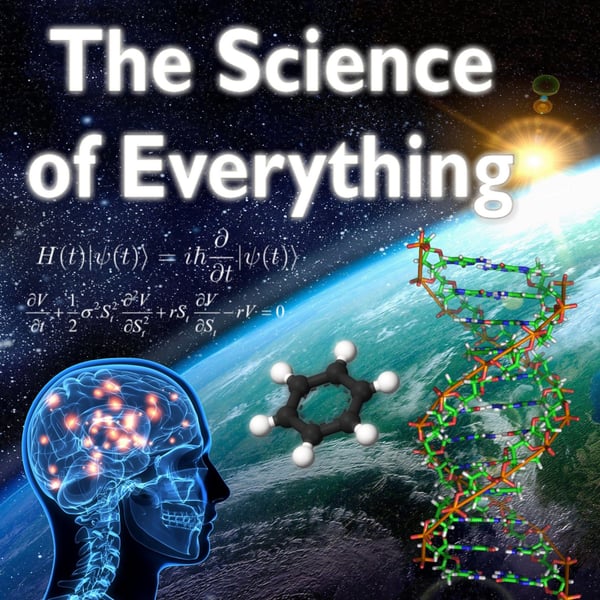Episode 120: Computational Chemistry Part 2
The Science of Everything Podcast
James Fodor
4.8 • 750 Ratings
🗓️ 31 July 2021
⏱️ 73 minutes
🧾️ Download transcript
Summary
Transcript
Click on a timestamp to play from that location
| 0:00.0 | Oh, wow, oh, oh, wow, oh, wow, oh, wow. |
| 0:13.0 | Oh, wow. |
| 0:15.0 | Oh, my. Hello, you're listening to The Science of Everything podcast episode 120 Computational Chemistry Part 2. |
| 0:41.4 | I'm your host, James Fodor. |
| 0:43.2 | This episode, we will continue from the previous episode, which of course is the prerequisite, |
| 0:48.3 | and talk about computational chemistry, particularly we're going to continue on from where we left off last time and talk about |
| 0:55.2 | how you can actually make proximate estimates of what your wave functions are going to be, which |
| 1:00.9 | you can then use to solve the Hartree-Folk equation. So we'll talk about the basis functions that are |
| 1:05.0 | used for that purpose. I will then go on to talk about methods for incorporating electron |
| 1:10.4 | correlation in order to increase the accuracy of these methods and some of the techniques that are used there. |
| 1:16.4 | Then, once we're done with that, I'll talk about some of the other approaches to estimating molecular structure and energies. |
| 1:25.1 | Particularly, I'll talk about semi-emperical methods and density functional theory, |
| 1:28.3 | which are kind of like two different takes to ab initio calculations on how to work out molecular structure and energies. |
| 1:34.3 | And finally, at the very end, I will talk about at a higher level, something called molecular mechanics or molecular dynamics, |
| 1:42.3 | which is a method of simulating larger molecules |
| 1:44.8 | using classical mechanics. So there's quite a bit to get through. And as I said, the episode |
| 1:50.1 | 119 part one of this two-part series is an absolute prerequisite in the sense that you probably |
| 1:55.0 | won't be able to follow what I'm talking about if you haven't listened to that. So strong warning |
| 1:58.0 | there. If you haven't done so, please go back and listen to that first. |
| 2:01.7 | That being said, let us get started by just briefly reviewing where we got up to last time. |
| 2:07.2 | So remember, the whole sort of premise of what we're trying to do here is to solve for the molecular |
| 2:11.2 | wave function of some molecule, you know, a bunch of different atoms bonded together. |
... |
Please login to see the full transcript.
Disclaimer: The podcast and artwork embedded on this page are from James Fodor, and are the property of its owner and not affiliated with or endorsed by Tapesearch.
Generated transcripts are the property of James Fodor and are distributed freely under the Fair Use doctrine. Transcripts generated by Tapesearch are not guaranteed to be accurate.
Copyright © Tapesearch 2025.

